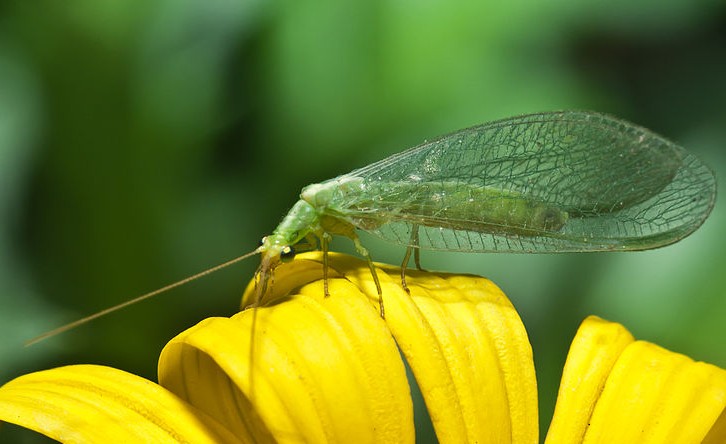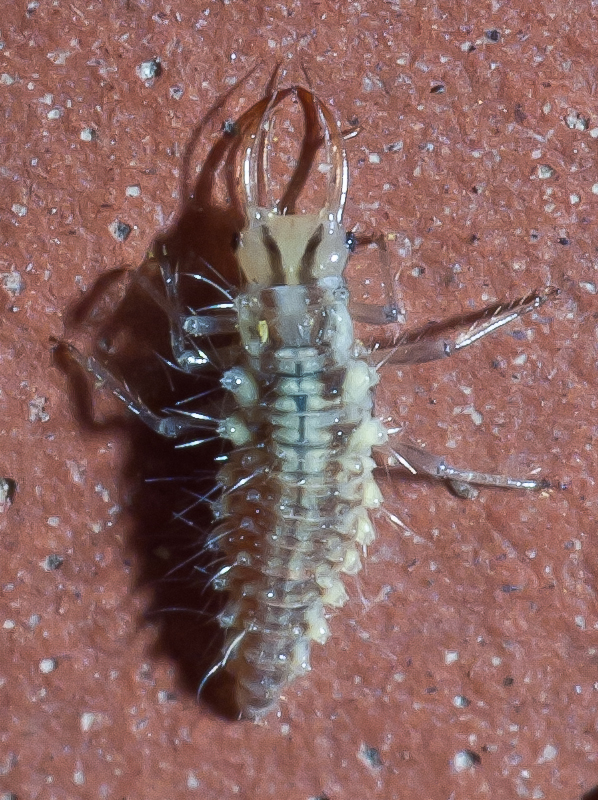
Green lacewings belong to the insect family Chrysopidae and are one of several families called lacewing. They are the most common form of lacewing with over 1200 different species worldwide and over 85 species in North America. They live in grass and on weeds, shrubs and trees. The adults are active in the evening and at night and are attracted by light. They may be predaceous or feed on nectar, pollen and honeydew depending on the species. The larvae are all predaceous feeding on a variety of small insects including aphids, scales, mealybugs, thrips, whiteflies, psyllids, leafhoppers, beetles, lacebugs, small caterpillars and other insect larvae, and insect eggs.

The adults are usually green and .4-.8” long. They have large golden compound eyes, long slender antennae, a soft body and four membranous wings that lie folded over the body when at rest. The larvae are 1/8-4/5” long, flattened, tapered at the tale end, and have dark markings and bristles that collect debris and camouflages them. They have large sharp mouth parts for piercing their prey and sucking out the juices, are often called aphid lions. Females lay their small, green, oval eggs in the evening either singly or in clusters on long stalks attached to the underside of leaves. The eggs darken before hatching in four days. Larvae go through three instars over the period of several seeks and then pupate in cocoons attached leaves or stem until they emerge as winged adults.
To attract and maintain populations of green lacewings it is necessary to provide both cover and food. Grasses, weeds, shrubs and trees provide the habitat green lacewings needed to carry out their lifecycle and attract food for predators. For adults that feed on pollen, nectar and honeydew, flowers can be planted. Especially popular are plants in the aster family such as bacharis, coreopsis, cosmos, cup plant, daisy, dandelion, feverfew, golden marguerite, goldenrod, heliopsis, sunflower,yarrow and yellow cone flower. Also popular are plants in the parsley family such as angelica, anise, caraway, coriander, dill, Queen Anne’s, and lovage. Erigonium, calamint, mountain mint, oregano, sweet alyssum, verbena and wall flower are also good food sources for green lacewings.
Green lacewings are used for pest control and both eggs and larvae are commercially available for release in the garden.
To buy green lacewing eggs from Amazon.com click here.